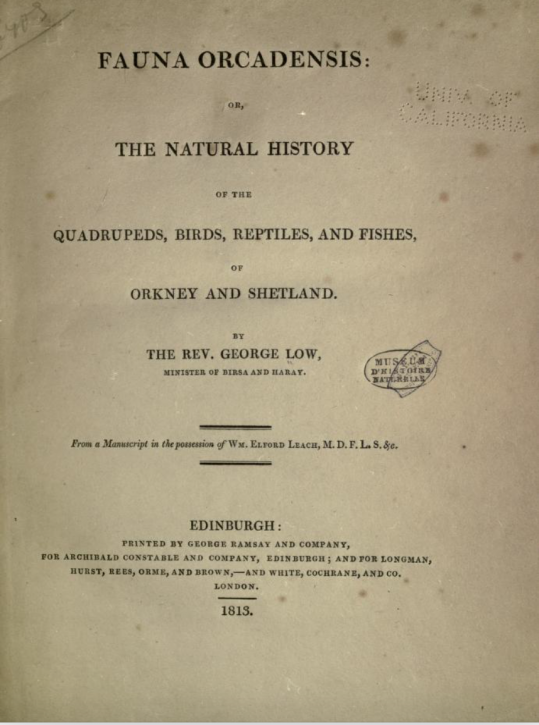A wild Neolithic hat-trick
It’s time for me to catch the ferry away from Orkney for a short while. I have an evening to spare and the only place I want to be is at the Ring of Brodgar. The Ring was built between 2500 BCE and 2000 BCE and was the last of the great Neolithic monuments at the Ness.
I’ve been reading an online book on the ferry. It’s over 200 years since the publication of Fauna Orcadensis; or, The natural history of the quadrupeds, birds, reptiles and fishes of Orkney and Shetland. Written by George Low, it details stories and observations of domestic and wild animals.
As I open the car door a Hen Harrier scoots past the Ring and up the gentle slope and away. As I get my camera out from its car seat belt (clunk-click every trip), it reappears and whooshes back past the Ring, over one of the mounds that surround it and is gone. It was too distant but a thrill, nevertheless. The Hen Harrier is mentioned in the Fauna Orcadensis:
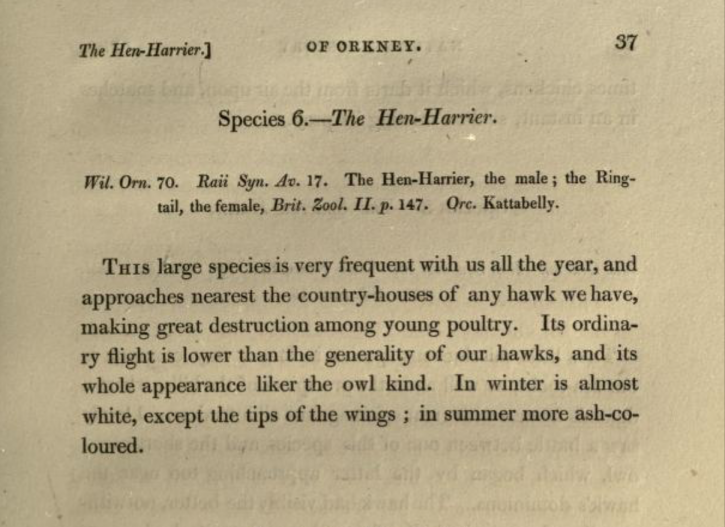
“This large species is very frequent with us all year, and approaches nearest the country-houses of any hawk we have, making great destruction among young poultry.” It’s called a Hen Harrier for a reason. They are also partial to Red Grouse, especially when they are industrially farmed for massacre on Grouse moors, which is why they are the most persecuted bird of prey in the UK.
“Very frequent”? I wish it was. I love the Orcadian name for the Hen Harrier, Kattabelly. In Orkney they are still thriving despite the loss of habitat to farming.
As I walk towards the ring there’s a male Stonechat with a malfunctioning volume control.
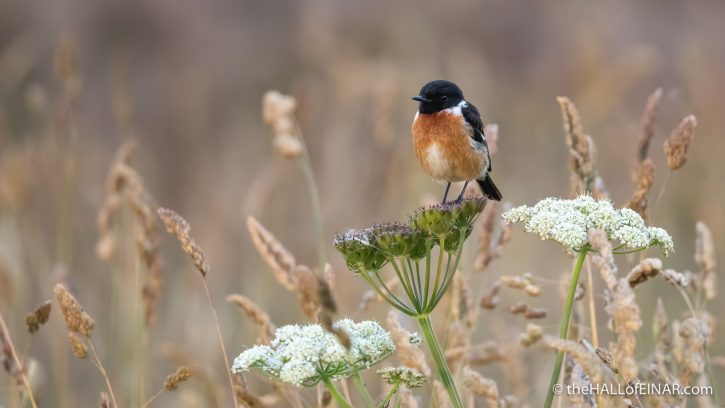
And there’s a Wren perched beautifully on Angelica.
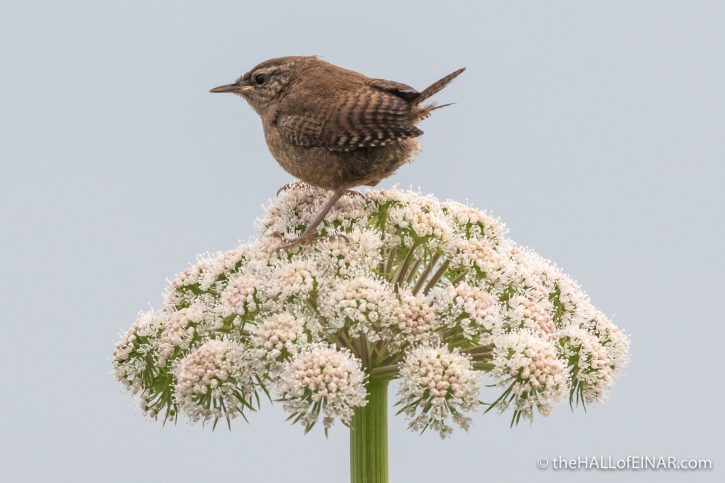
The Ring of Brodgar is over 100 metres wide. It’s often described as being part of an ‘enormous prehistoric ritual complex’. That’s archaeologist-speak for ‘we haven’t a clue what it was for’.
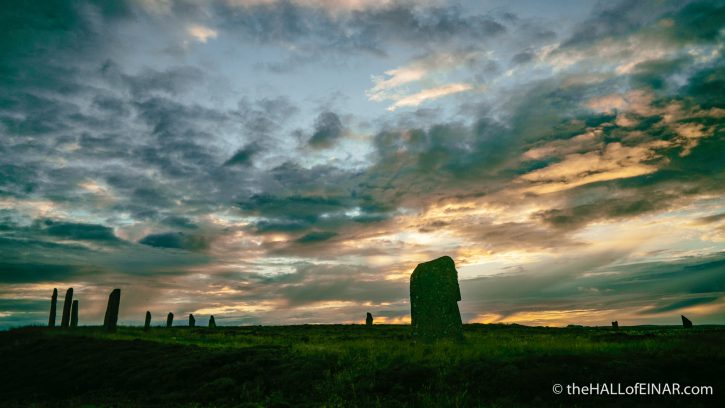
The word ‘ritual’ makes people today think that Neolithic people were humourless and that everything they did was imbued with some deep religious significance. Maybe they were and maybe it was.
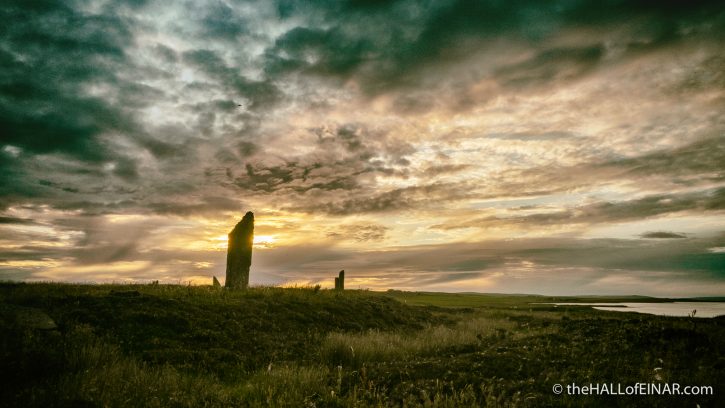
However, I suspect there was a lot of music, dancing, drinking and fornicating. We all project our own contemporary concerns onto the past, don’t we?
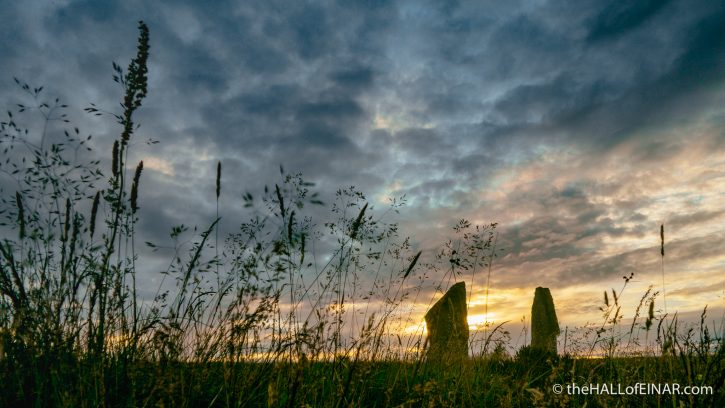
The sun is setting behind one of the stones. Here’s a view of the Ring of Brodgar that other people wouldn’t capture.
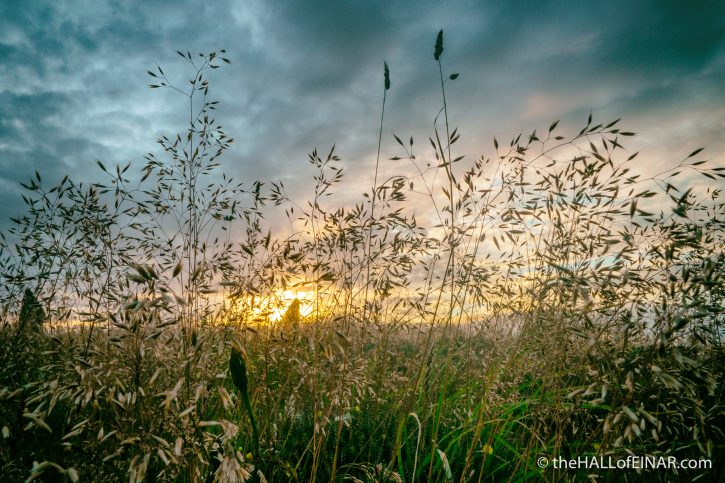
I like the idea that the Ring is masked and only glimpsed through the grasses. It’s a metaphor for the view we have through time, with only glimpses of what it might have been.
Recently they’ve had problems with people breaching the massive stone ditch and wandering around inside the stone circle. This Lesser Black-Backed Gull even had the audacity to touch one of the stones.
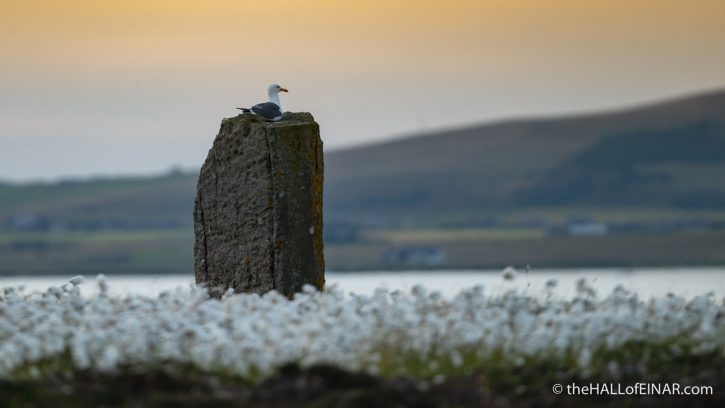
That’s gulls for you.
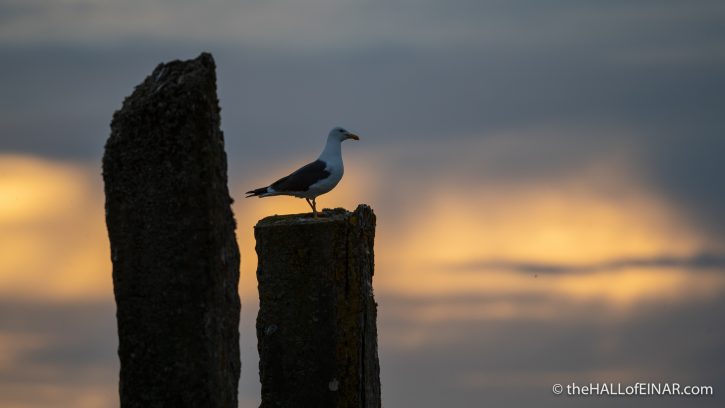
I meander down to the Loch behind the Stones, the Loch of Stenness.
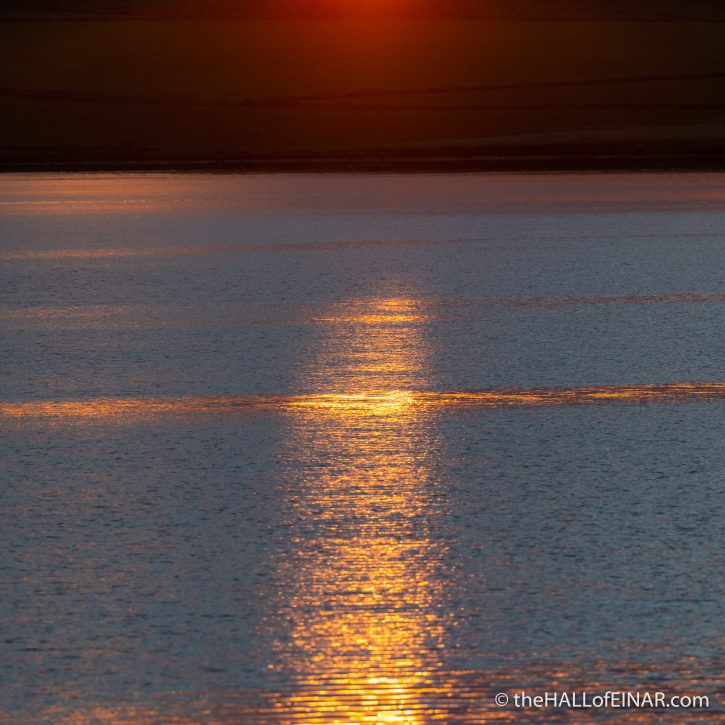
I spot a large Otter slip into the water and swim across. I laugh. This is turning into a wildlife safari rather than a brief walk amongst the archaeology.
Here’s what George Low writes about the Otter in Orkney:
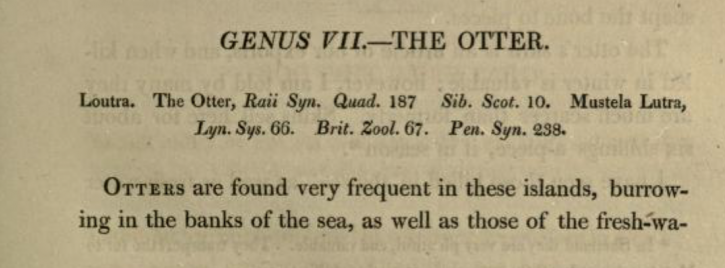
“Very frequent”? If only they were.
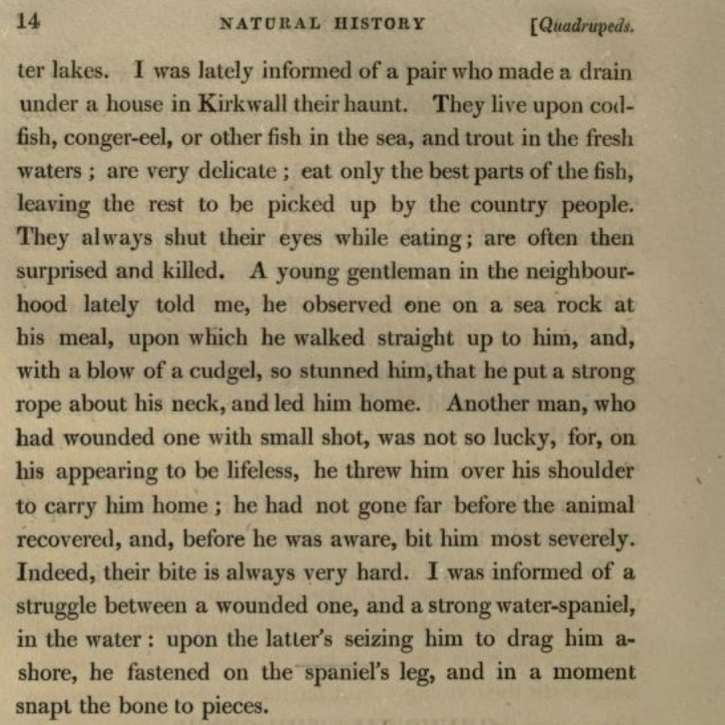
“They always shut their eyes while eating; are often then surprised and killed”. That’s tragic. People cudgelling Otters is barbaric. I enjoy the story of the Otter’s revenge and the phrase “Bit him most severely” has a triumphant ring to it.
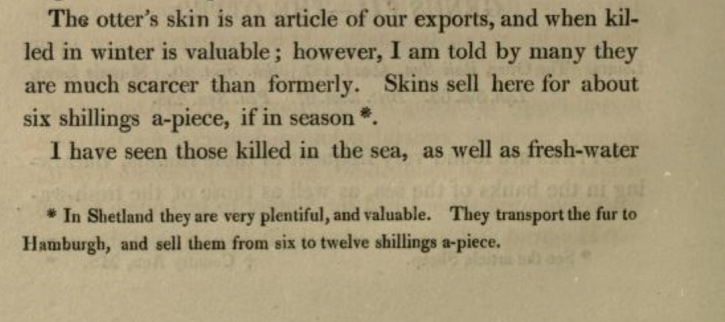
I would gladly have given six shillings for them not to kill an Otter had I been around two hundred years ago. Having said that, with the absence of childhood immunisations and penicillin I wouldn’t have survived childhood.
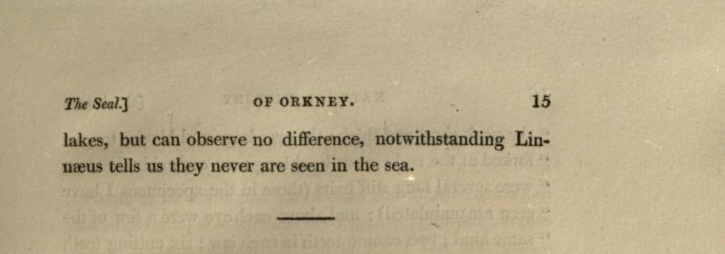
Then it’s time to go. I have an overnight ferry to catch. It’s when it’s after sunset that I see a Short-Eared Owl appear across the Loch.
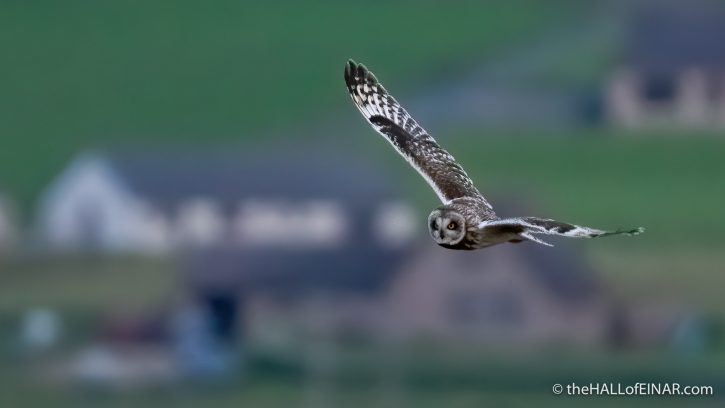
It’s got a very distinctive cat-like face. Locally, it’s known as Cattie-face.
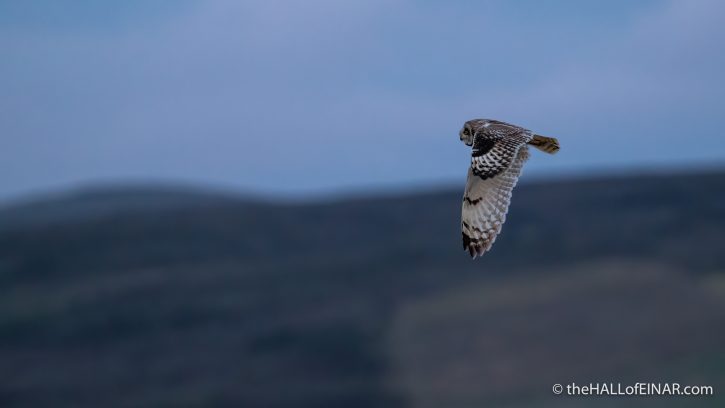
It’s almost dark but I still manage to get some photographs.
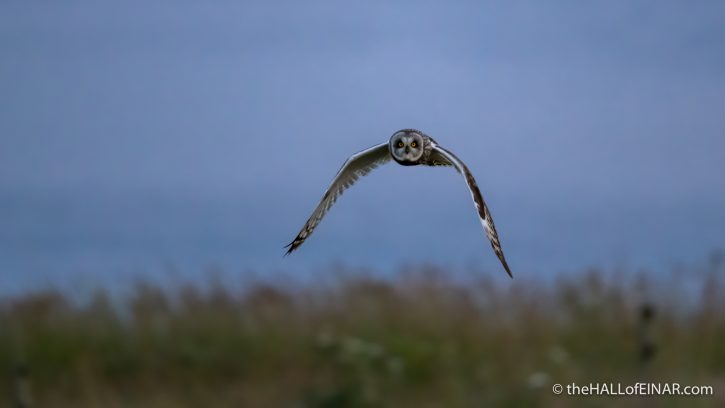
George Low mentioned the Short-Eared Owl too. He, as was common with keen naturalists of the time, shot and killed one to have a good look at it:
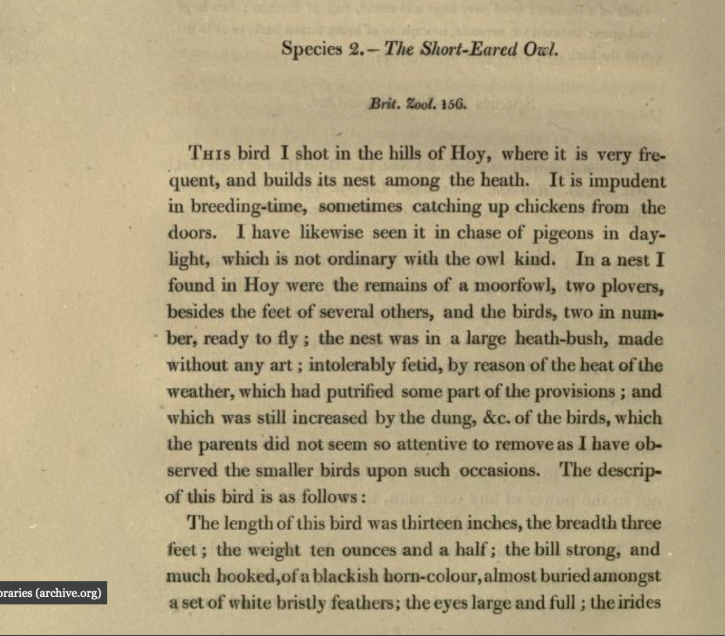
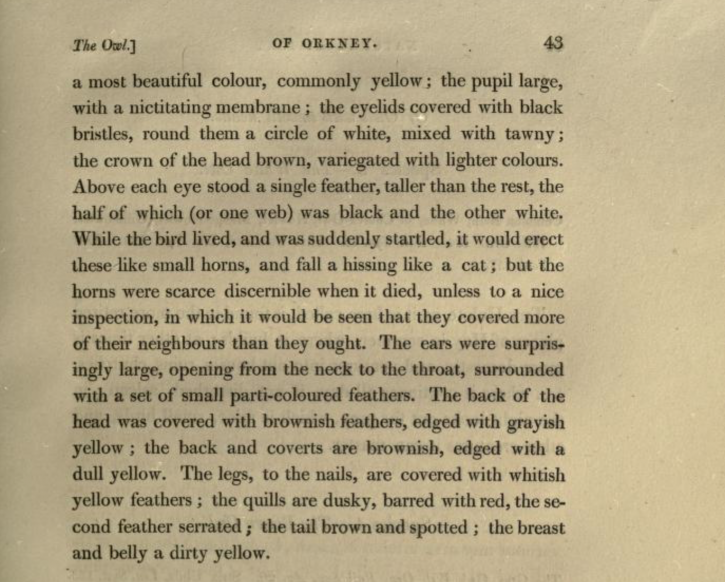
Today we use optics, not ballistics. When it heads towards me and gives ‘that look’ my day is complete.
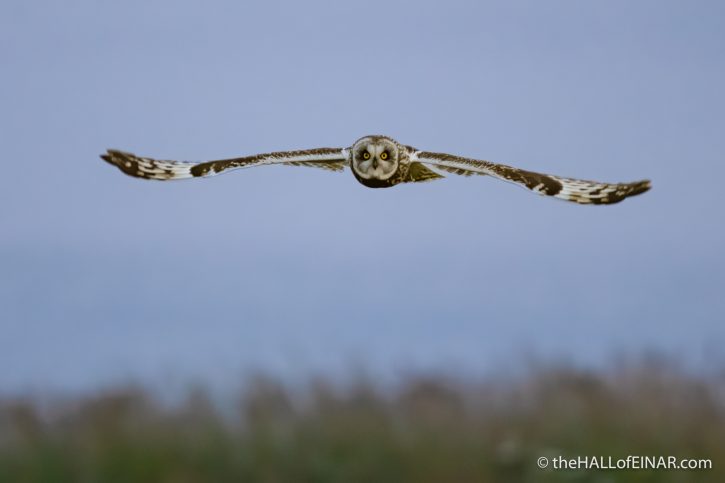
A Hen Harrier, an Otter and a Short eared Owl in the space of an hour. Wonderful. I hope they will be thriving, and someone will be as thrilled with them in two hundred years time, as I am tonight.
